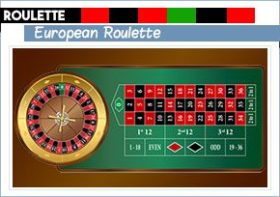Bankroll Management: Key to Sustained Poker Tournament Success

Poker tournaments are an exhilarating way to test your skills and potentially win big. However, success in these tournaments requires more than just luck and skill. One of the crucial aspects to consider is bankroll management. Whether you are a beginner or a seasoned player, managing your bankroll effectively can determine your long-term success in poker tournaments.
Understanding Bankroll
In poker, your bankroll refers to the sum of money you have set aside solely for playing poker. It is essential to separate this amount from your personal finances. When participating in tournaments, you should only play with a bankroll that you can afford to lose.
Calculating a Suitable Bankroll Size
The size of your bankroll should be based on various factors such as your skill level, risk tolerance, and the level of the tournaments you plan to enter. A general rule of thumb is to have at least 20-30 times the buy-in for the tournaments you will participate in. For example, if you wish to join a $100 tournament, a bankroll of $2,000 to $3,000 would be appropriate.
Implementing a Bankroll Management Strategy
To ensure sustained success in poker tournaments, it is vital to develop and follow a bankroll management strategy. Here are some essential tips:
Set Bankroll Limits
Determine the upper and lower limits for your bankroll. These limits will help you decide when to move up to higher stakes or down to lower stakes. If your bankroll exceeds the upper limit, you can take shots at more expensive tournaments. Conversely, if your bankroll drops to the lower limit, it’s a sign to move down to cheaper tournaments until you rebuild your funds.
Control Your Buy-Ins
Don’t play with buy-ins that exceed a certain percentage of your overall bankroll. It is recommended to limit your buy-ins to 1-2% of your total bankroll. This approach reduces the risk of going broke during a downswing.
Play Within Your Bankroll
Stick to tournaments that are within your bankroll’s range. Avoid the temptation of playing high-stakes tournaments where the buy-ins exceed your bankroll limit. Doing so can lead to unnecessary financial strain and potential ruin.
Monitor Your Bankroll Regularly
Keep track of your bankroll’s progress by regularly reviewing your wins, losses, and overall performance. This analysis will allow you to adjust your strategy as needed and ensure you stay within your bankroll’s boundaries.
The Psychological Aspect
Proper bankroll management not only ensures financial stability but also has a significant psychological impact. By playing within a predetermined bankroll, you can avoid unnecessary stress, anxiety, and tilt caused by fear of losing too much money.
Summary
Bankroll management is an integral part of achieving long-term success in poker tournaments. By understanding the importance of bankroll, calculating a suitable bankroll size, and implementing a solid management strategy, you can maximize your chances of sustained success while minimizing the risk of bankroll depletion. Additionally, proper bankroll management can alleviate psychological pressure, allowing you to play and enjoy the game to its fullest.

